Automotive Aftermarket Industry – eCommerce Challenges for Merchants

What’s the state of Automotive Aftermarket eCommerce in 2020? What are some of the common pain points of businesses in the aftermarket auto parts industry?
How are they solving challenges with large catalog handling, product fitments, and user experience? Are they making it easy for their customers to find exactly what they are looking for?
Read on to learn more about the trends and most common issues merchants are trying to solve.
Disclaimer: Even before the Covid-19 pandemic, eCommerce was on a constant rise across all industries globally. The pandemic was more of an accelerant than a game-changer in this regard. This means we’ll see these forecasts updated after the true effects of the coronavirus have taken shape.
Market size and trends
eCommerce Automotive Aftermarket size exceeded USD 8.69 billion in 2019 and will grow at a CAGR (Compound Annual Growth Rate) of 18.5% between 2020 and 2026. This is suggested by the GMI industry analysis report from earlier this year.
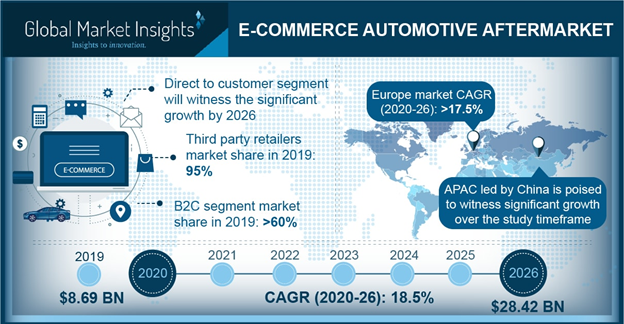
Some of the main growth drivers have been identified by this report as:
- Increasing eCommerce platforms and acquisitions
- Growth in eCommerce spending
- Shifting trend towards brick & click business model
- Increasing automotive production and presence of auto players
- Increasing average vehicle age
- Shifting trend towards digitalization
Now, in the wake of Covid-19, most of these drivers will remain. I’d say that we’ll see even faster growth in several of those areas. This is especially true when it comes to eCommerce platforms and overall growth in eCommerce spending.
Main pain points of automotive aftermarket merchants
So, these industry trends are clear. And one thing is sure – industry growth will continue. What are you doing to take advantage of this and increase your market share? How can you improve your potential to grow?
Let’s try and help you with identifying some of the main industry challenges. These are common to all automotive parts distributors when trying to start or improve their eCommerce channels.
Those depend, to an extent, on the markets they operate in. However, in this particular industry, there are three very clear and common challenges to solve.
They are:
- adequate management of large vehicle databases and catalogs
- ensuring proper parts fitment mapping
- creating a clear and efficient user experience for online buyers.

Databases and standards
The first one is the use of the proper year-make-model database of vehicles and associated car parts fitments. There are several standards (ACES, PIES etc.) and databases (TecDoc, AutoCat…) that are used globally or regionally. These databases and standards are usually not properly synced, even though there are improvements in that area.
Therefore, this causes issues for merchants who would like to use a one-size-fits-all solution. And there is none. Merchants have to rely on securing databases from various manufacturers and suppliers. Then they have to adequately map these out, integrate and manage such inventories.
Parts fitment
The second one is the difficulty of properly organizing the proper fitments across vehicles and parts database. This is especially needed to enable ease of use for website visitors.
More often than not, the solutions lack clarity and accuracy of matching parts with vehicles they are compatible with. This is tightly connected with the database issue listed above.
If you do it properly, you’ll see fewer returns and your customer service will probably have to take fewer phone calls.
Catalog presentation and overall UX
The third challenge is the selection of an eCommerce software solution to properly support the growth of the business. Even when the first two challenges are solved, merchants can fail if selecting an eCommerce solution that will not adequately support the breadth of the products database and will fail in delivering proper user experience.
A subsection of this is the ability to visually present car parts to customers. They are often not certain about the part names but would rather prefer to look under the hood. This way, with the assistance of visual aids (part diagrams and similar), they can confirm the part is exactly the one they are looking for.
Most sought-after features for a car parts website
Aside from the platforms themselves, there are some software solutions and services that transcend the limitations of platforms. Some of these solutions can be simply hooked into the store, regardless of the system a merchant is using.
Let’s focus on some of the main features that most successful car parts merchants are using on their stores.
Year-Make-Model filter
This is a must-have feature for most stores in the industry. Forget about the usual navigation and trying to find a specific part by going through levels and levels of categories. That simply doesn’t work in automotive.
This type of assisted navigation on the website is essential for the website visitors to be able to find their way around tens of thousands of parts.
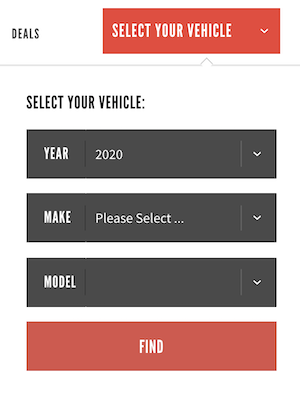
The most common use case is somewhat different than what the title suggests. For example, you would usually have a customer select their car make (Renault) followed by the model (Scenic) and then the year (2018). And then – magic!
The store filters only those parts that fit your selected car. Most stores need a quality solution for mapping the vehicle database with the website catalog.
We would usually combine a 3rd party extension with additional customizations and database mapping (perhaps an extra option is needed, like engine etc.) to create a solution that works seamlessly for the end-user.
Fitment challenges
There is an additional component to the inventory and catalog management. And this one complements the product parts finder. Once a customer is on the product page, you should clearly communicate what other vehicles that part fits, too.
Parts fitment, while perhaps a bit complex to properly map in the database, can be easily presented on the website. It can be as simple as a list of all the vehicles a part fits on its product page.

The clarity in presenting adequate parts fitment can make a huge difference in decreasing returns and lowering the impact on customer service agents in call centers.
Part diagrams
Visual presentation of a car engine or a front-wheel drive helps a great deal when figuring our what exact part a customer is looking for. This feature is typically done as an interactive picture featuring a number of parts. When a customer clicks on the part number, they are presented with the exact names of associated products on the shop that match the selection.
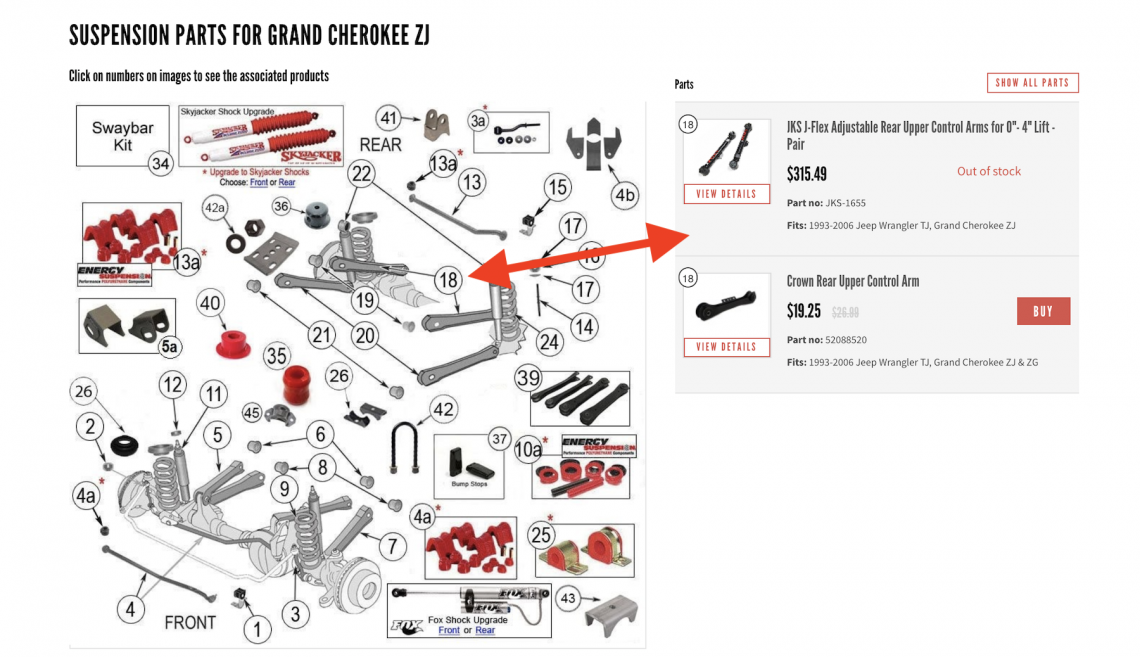
This is a very useful feature for this kind of business, where even mechanics, let alone customers, sometimes don’t know the exact name of the particular car par. That’s why visual aid is more than welcome.
My Garage
My garage, called differently on different websites, is essentially a UX personalization feature. It allows customers to save their vehicle(s) selection, modifying the catalog visibility to show only the products that fit their vehicle.
It’s connected to the Year-Make-Model feature in a sense that it saves the selection within a user account. You can then usually store several vehicles in your virtual garage.
This allows customers to quickly switch between the pre-selected vehicles and find the appropriate parts sooner. This beats having to go through the selection process each time they visit the website.
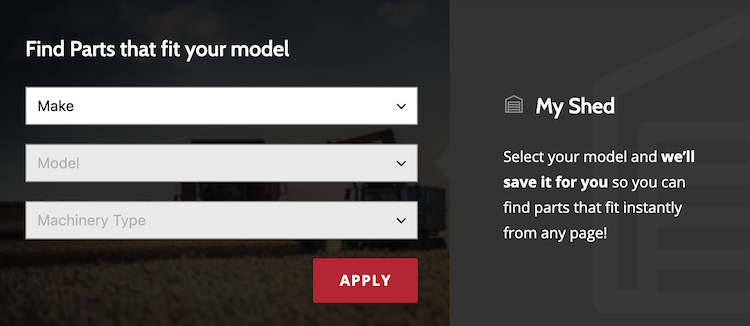
How to succeed in automotive aftermarket eCommerce?
You’ve seen some examples of the features that can help you when creating or improving your website. And if you want to get a bigger picture of what it takes to create and manage a successful automotive aftermarket eCommerce website, you can start right here.
We have a lot of experience and industry knowledge gained over the years of working with merchants in the automotive aftermarket business. Match that with our eCommerce expertise and certifications to go with it, and you have yourselves a true partner for growth.
We can help you get started if you are looking to start selling online.
And if you’re already running an online store selling car parts, and would like to improve your technical solution, your UX or the performance of your marketing channels, let us know – we’ll be happy to help you!
Want more useful content like this? Download our FREE automotive aftermarket eCommerce success guide!
You’ve seen some examples of the features that can help you when creating or improving your website. And if you want to get a bigger picture of what it takes to create and manage a successful automotive aftermarket eCommerce website, you can start right here.
We’ve gathered our experience and industry knowledge gained over the years of working with merchants in the automotive aftermarket business. And now, we have prepared a useful guide to help you steer your way to success.
Feel free to download our Automotive Aftermarket eCommerce Success Guide to get started!
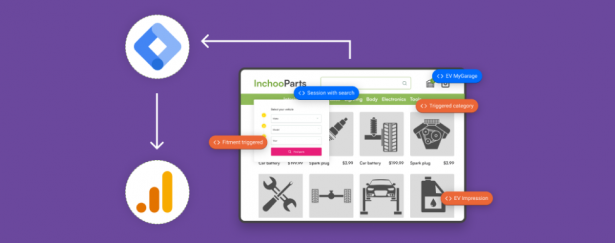

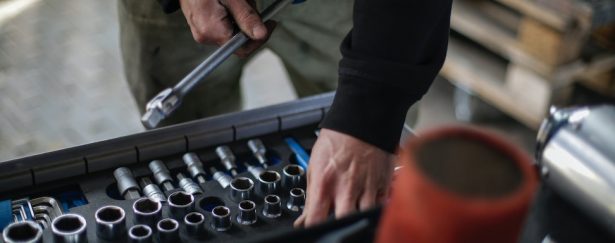
6 comments
fantastic information really helpful thanks for sharing
https://www.autoparts-miles.com/
The information given is very helpful and informative. Would wish to know more.
There are many challenges face by a many industries or company after Covid situation. Safety is the big matter. Subscribed your blog.
Thank You so much for the Awesome article. Why I used the word awesome because I read this article before 5 months and by following those points in this article I created a very good website for my car business and it helps me a lot. I think because of this article I improved my business online.
Thanks a lot, Mr. Aron Stanic…
keep giving lots of information to everyone…
This is really appreciated that you have presented this data over here automotive aftermarket ecommerce industry trends challenges, I love all the information shared. It will be very helpful to understand how to start a painting business!! This is a lovely and informative post…
Awesome! Information. Great work thank you for sharing such useful information’s. keep it up all the best. I can also refer you to one of the Automotive Analytics Solutions in Hyderabad.